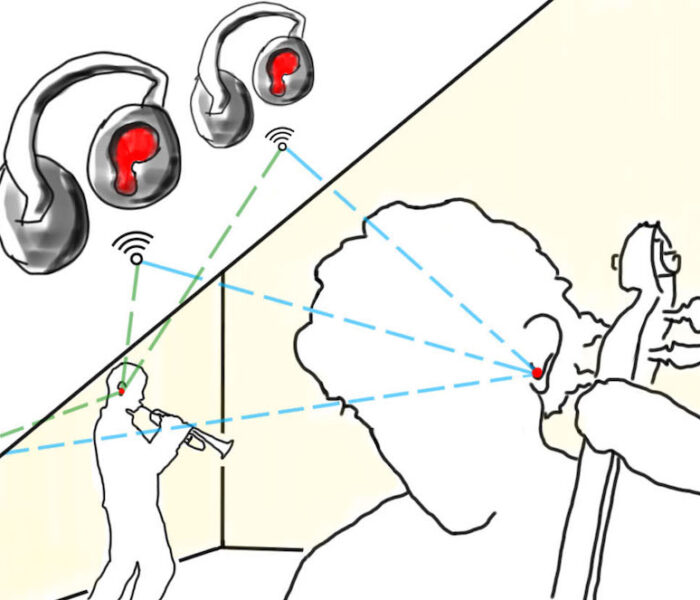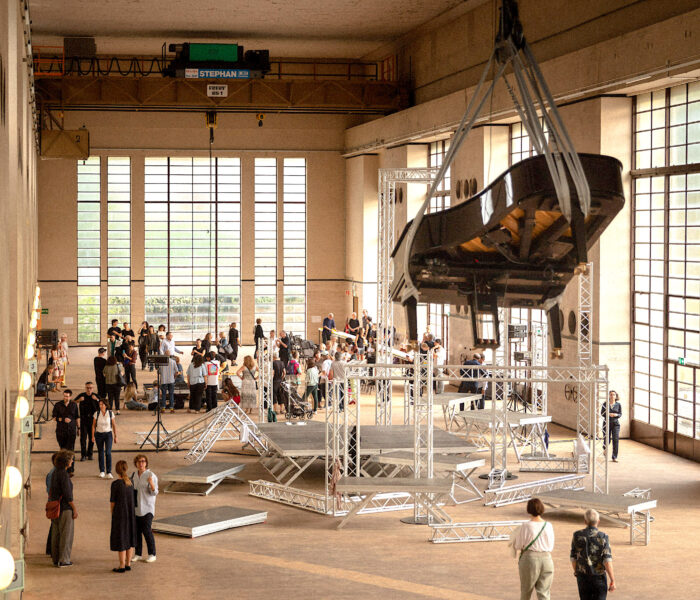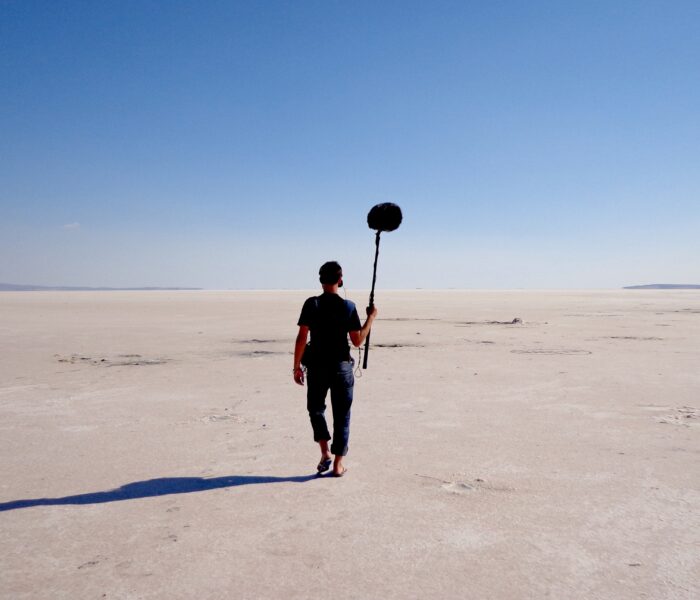Penser le son à travers certaines œuvres récentes de l’art sonore, c’est le projet de cette série de chroniques. Les artistes n’en font pas seulement un matériau qu’ils exposent et travaillent, ils le réfléchissent et l’interrogent, rendent sensible ce qui, dans nos expériences quotidiennes, demeurent le plus souvent inaperçu. Un son existe-t-il s’il n’est pas perçu ou s’il n’existe aucun milieu pour en transmettre l’énergie cinétique ? Est-il un individu, une propriété, une vibration, une sensation, un concept ? A-t-on besoin d’une oreille pour entendre ? Un son enregistré devient-il un artefact ? Telles sont quelques-unes des questions auxquelles nous essaierons de répondre sur les traces, audibles et inaudibles, que les artistes sonores laissent derrière eux.
Selon la perspective que l’on choisit d’adopter, un son peut supporter au moins trois définitions. Le dictionnaire a tendance à privilégier notre perspective humaine de sujet entendant : le son est alors une sensation auditive ou, pour reprendre la définition de Michel Chion, un « auditum », autrement dit « le son en tant que son perçu » quel que soit son mode d’écoute*. Pour les manuels de physique, il est une onde matérielle qui se propage dans un milieu élastique, fluide ou solide. Il est alors identifié à la vibration mécanique que l’onde propage. Enfin, certains philosophes considèrent que le son n’est ni l’onde ni la sensation mais l’événement qui, dans l’objet résonant ou à sa proximité immédiate, se produit en même temps que l’onde qui traverse le milieu jusqu’à ce qu’elle rencontre une oreille (si oreille il y a).
Notre hypothèse est que ces trois définitions ne sont pas exclusives. Pour celle ou celui qui l’entend, un son est une sensation auditive indiquant que quelque chose s’est produit quelque part dans ses alentours. Mais il ou elle peut très bien ne prêter attention qu’à la sensation elle-même, par exemple si ce qu’il ou elle entend est un morceau de musique ou un son dont la richesse ou la beauté fait oublier la source. La perspective physique considèrera la vibration, la perturbation qui l’a causée et le milieu dans lequel elle se propage, mais elle s’intéressera également à la manière dont les ondes sonores sont perçues et donc à la physiologie de l’audition, du tympan qui vibre au cerveau qui interprète (l’acoustique devient alors psychoacoustique). Les philosophes adoptent encore une autre perspective, celle de l’ontologie. Ils se demandent quel type d’être est un son : une chose, un événement, un individu, une qualité, etc. Si, pour certains, il est une vibration, pour d’autres, il est l’objet de la perception auditive, pour d’autres encore une propriété des objets résonnants, etc. Pour Casey O’Callaghan, auteur d’un livre remarqué sur la question, «les sons sont des événements dans lesquels un objet en mouvement perturbe un milieu ambiant et le met en mouvement d’une manière ondulatoire».**
Il existe cependant un moyen de concilier ces différentes perspectives : considérer que le son n’est pas un individu ou une qualité mais une relation ; entre un événement et une oreille, entre une perturbation et un milieu, entre une onde matérielle et un système sensoriel, entre deux locuteurs en train de converser dans une pièce close, entre un pulsar émettant des ondes électromagnétiques, un radiotélescope orienté dans la bonne direction et un dispositif les traduisant en ondes sonores, etc. Pour qu’il y ait un son quel qu’il soit, au moins deux termes sont nécessaires. Une perturbation seule ne fait pas un son, pas plus qu’un milieu sans mouvement ou une oreille dans le vide. Un son est ce qui se produit quand un événement perturbe un milieu ou quand une onde matérielle fait vibrer un tympan ou la membrane d’un microphone. Une oreille n’est qu’un des termes possibles de la relation sonore. Un son peut exister sans elle, il ne saurait exister sans une cause et un milieu. Mais ils sont plus que de simples réquisits, le son n’est pas autre chose que le produit de leur relation : la manière dont une énergie-source (le choc du battant sur le corps de la cloche) affecte un milieu (en faisant varier sa pression) et dont elle est en retour affectée par lui. Impossible d’entendre un son sans entendre en même temps le milieu (aérien, aquatique, solidien) qu’il traverse. Revenons à la définition de Casey O’Callaghan, citée plus haut. Elle est étrangement ambiguë. Le son y est défini comme un individu, mais un individu qui ne peut exister que si un objet perturbe un milieu. Autrement dit, le son y est décrit comme l’effet d’une relation qui ne dit pas son nom.
À condition, toutefois, de penser celle-ci comme extérieure à ses termes. C’est le paradoxe de la relation : elle est le produit des termes qu’elle relie sans être réductible à eux. Le son peut être l’effet de la relation entre un système auditif et une onde aérienne sans être à proprement parler ni l’un ni l’autre. Son extériorité n’est qu’une autonomie relative : il n’existe qu’aussi longtemps que la relation perdure. Si je m’éloigne, le son disparaît en tant que relation entre mon système auditif et la vibration de l’air, mais il continue d’exister en tant que relation entre sa cause physique et le milieu aérien.
Prenons un exemple récent. Du 8 juin au 14 novembre 2022, l’artiste sonore américain Bill Fontana a présenté – sur la terrasse sud du cinquième étage du Centre Pompidou, à Paris – une installation sonore qui permettait aux visiteurs d’écouter la résonance des cloches de Notre-Dame pendant les travaux de rénovation de la cathédrale. L’œuvre s’intitule Silent Echoes (échos silencieux). « Silencieux » parce que l’installation laissait les cloches au repos. Bill Fontana s’est contenté de disposer sur chacun d’elles des accéléromètres sismiques, l’outil qu’utilisent les ingénieurs et les sismologues pour mesurer la vitesse de propagation des vibrations dans un matériau quelconque. Ils lui servent ici à capter les ondes qui traversent les cloches de la cathédrale. Car celles-ci ne cessent jamais de vibrer. Elles vibrent sous l’effet des sons ambiants, du vent et des ondes multiples qui traversent le bâtiment. Ces vibrations sont trop infimes pour être entendues par une oreille humaine mais les accéléromètres y sont sensibles. Elles étaient ensuite transmises à un ordinateur, où elles étaient traitées, composées et spatialisées (à l’Ircam, sur le logiciel Max/MSP et en collaboration avec un computer music designer, Thomas Goepfer) puis projetées sur les haut-parleurs de l’installation.
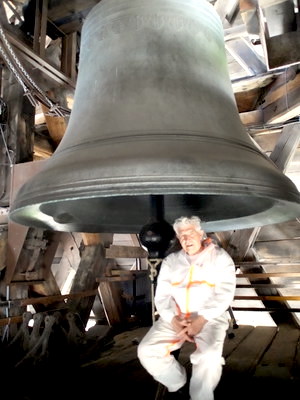
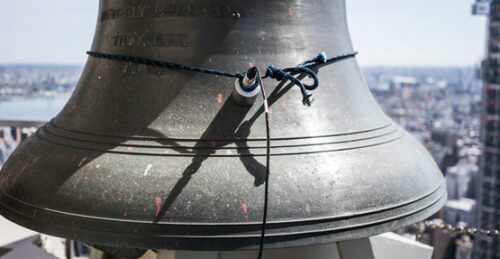
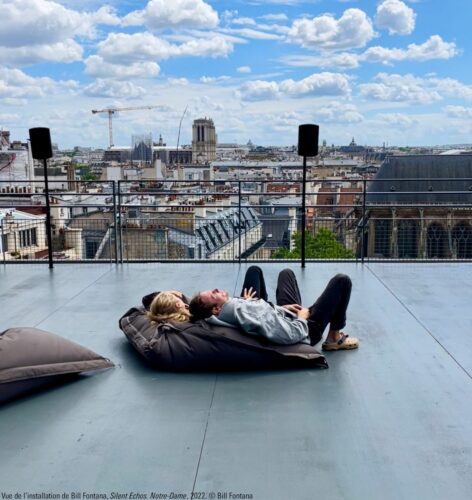
Commençons par adopter la perspective du visiteur de l’installation, sur la terrasse sud du cinquième étage du Centre Pompidou. Il entend d’abord les sons de la ville, ceux de la circulation le long de la rue du Renard, les voix et les musiques qui montent de la place Stravinsky et du parvis du Centre, les cloches de l’église Saint-Merri s’il demeure assez longtemps sur place. Il entend ensuite, à travers les 30 haut-parleurs disposés sur la terrasse, les résonances des dix cloches de la cathédrale, des sons sans attaque puisqu’aucune d’elles n’est percutée. Il ne les entend pas toutes en même temps mais écoute leur superposition variable, 4 puis 9 puis 5 puis 7, etc., les sons passant aléatoirement d’un haut-parleur à l’autre, ce qui donne l’impression d’un espace sonore mouvant et acentré. Il entend enfin les sons qui traversent les cloches et que les capteurs enregistrent avec leurs résonances : les perturbations innombrables qui se produisent autour de Notre-Dame et qui font vibrer l’air dans lequel baignent aussi les cloches. À travers le filtre des résonances, le visiteur entend des sirènes, des bruits de moteur, d’autres sons qu’il peine à identifier et hésite à nommer, vent, vibrations des pierres, croassement des corneilles, etc. Non seulement les sons inaudibles des cloches mais encore ceux, également inaudibles, qui les ont secrètement mis en mouvement. Ce que le visiteur entend, il l’entend à travers : à travers les cloches dont les sons ont, d’une certaine manière, pris la forme ; à travers l’air ambiant et multiplement vibrant, celui qu’il respire mais aussi celui qui entoure la cathédrale et qu’il entend déplacé sur la terrasse du Centre.
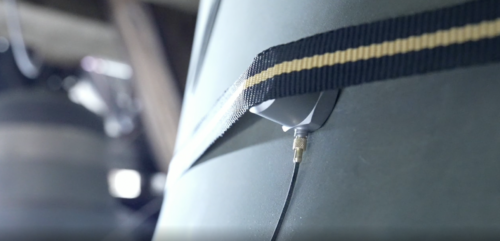


Adoptons maintenant une autre perspective, celle des cloches. Depuis leur installation il y a près de mille années, elles n’ont jamais cessé de vibrer, autrement dit d’être traversées par des ondes sonores que personne n’était en mesure d’entendre, des ondes qui manifestaient ce faisant le spectre, particulier à chacune, de leurs fréquences de résonance. Elles sonnent et révèlent leurs traits acoustiques sans avoir besoin d’être percuté par les sonneurs de la cathédrale. Nous pourrions les comparer à des tympans sans oreille, à des membranes métalliques suspendues dans un immense corps de pierre et de bois indifférent à leurs vibrations infimes. Il n’est pas nécessaire qu’elles entendent pour qu’il y ait relation sonore, il suffit qu’elles sonnent. Et il n’est pas nécessaire qu’il y ait des oreilles vivantes pour qu’il y ait des sons même si celles-ci enrichiraient alors le monde d’une nouvelle relation.
Les sons installés sur la terrasse du Centre sont le produit d’une multitude de relations et de médiations techniques : cloches, capteurs, fibre optique, ordinateur, logiciels, haut-parleurs, plus des oreilles et des cerveaux humains à différentes étapes de la chaîne. Il s’agit d’un ensemble de relations devenu processus de captation, de composition et de projection.
Les sons qui traversent les cloches sont le fruit d’une relation à trois termes entre elles-mêmes, l’air ambiant et les perturbations acoustiques environnantes. Que ces sons soient inaudibles par des systèmes auditifs humains (ou par ceux d’autres espèces animales) ne saurait être un argument contre leur existence. Ils existent parce que sont réunies les conditions d’une relation sonore effective.
Bastien Gallet
* « L’auditum, c’est le son en tant que son perçu, sans confusion possible avec la source réelle (ou le complexe causal qui en est la source), ni avec les phénomènes vibratoires qu’étudie la discipline nommée acoustique. À la différence de l’objet sonore schaefférien, l’auditum est objet de toutes les écoutes – réduite, causale, figurative, sémantique, différents niveaux d’appréhensions à la fois reliés et indépendants – sachant qu’il est bien à distinguer de ces écoutes qui le visent et dont il est le support. » Le son, Paris, Armand Colin, 2010 (1998), p. 384.
** « Sounds are events in which a moving object disturbs a surrounding medium and sets it moving in a periodic wave-like manner. », Sounds. A Philosophical Theory, Oxford, Oxford University Press, 2010, p. 61.
Photos © Bill Fontana
Photos © Hervé Veronese – Centre Pompidou
Photos © Centre Pompidou
Photos © Luca Bagnoli



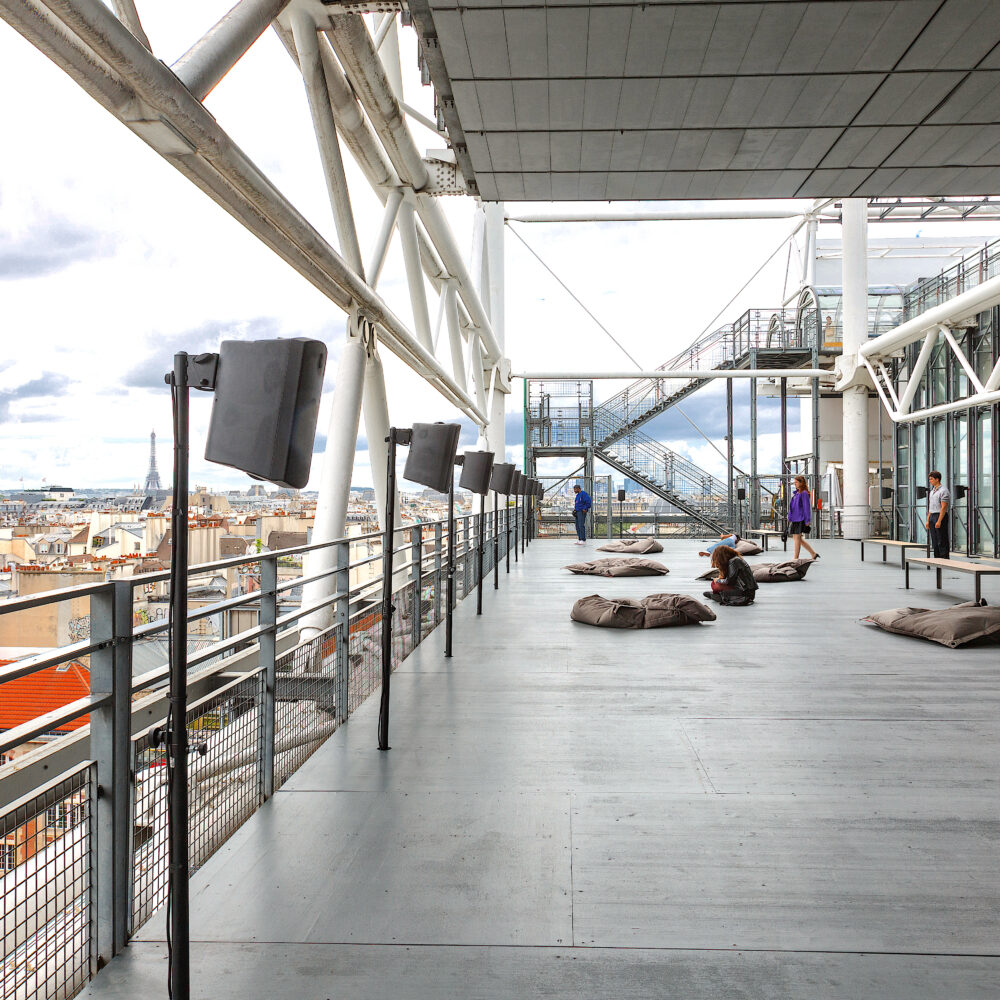)
